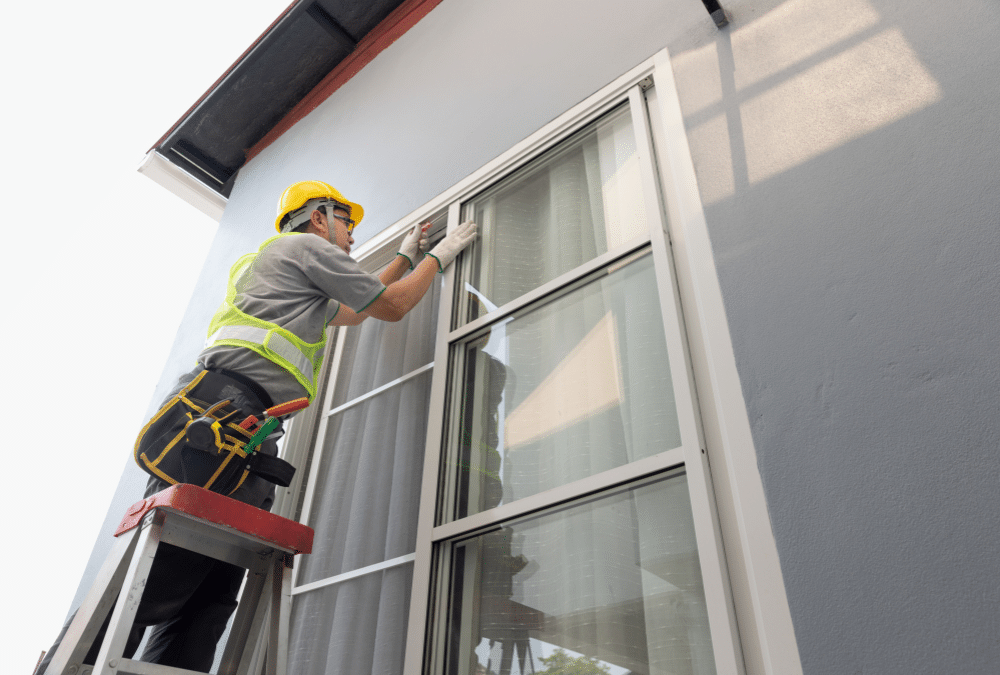Replacing your home’s windows represents one of the most impactful investments you can make for long-term energy savings and comfort. Energy-efficient windows can reduce heating and cooling costs by up to 30% while enhancing your home’s overall value and appeal. However, navigating the various options, ratings, and features can feel overwhelming without proper guidance.
This comprehensive guide will walk you through everything you need to know about selecting the right energy-efficient windows for your specific needs, climate, and budget. From understanding key performance ratings to exploring different frame materials and glazing options, you’ll gain the knowledge necessary to make an informed decision that benefits both your wallet and the environment.
Understanding Window Energy Performance Ratings
The National Fenestration Rating Council (NFRC) provides standardized ratings that help homeowners compare energy-efficient windows across different manufacturers. The most important rating to consider is the U-factor, which measures how well a window prevents heat from escaping your home. Lower U-factor numbers indicate better insulation properties, with the best energy-efficient windows typically ranging from 0.20 to 0.30.
Solar Heat Gain Coefficient (SHGC) represents another crucial metric that measures how much solar radiation passes through your window. In colder climates, you might want a higher SHGC to capture beneficial solar heat during winter months. Conversely, homes in warmer regions benefit from lower SHGC ratings to reduce cooling costs during hot summer periods.
Frame Materials That Maximize Efficiency
Door Insulation
Window frame materials significantly impact overall energy performance and long-term durability. Vinyl frames offer excellent thermal resistance at an affordable price point, making them popular choices for budget-conscious homeowners seeking energy-efficient windows. These frames require minimal maintenance and resist moisture, warping, and fading over time.
Wood frames provide superior natural insulation properties and classic aesthetic appeal but require regular maintenance to prevent rot and weather damage. Fiberglass frames combine the thermal benefits of wood with enhanced durability and lower maintenance requirements, though they typically cost more upfront.
Aluminum frames, while durable and low-maintenance, conduct heat readily and generally perform poorly in terms of energy efficiency unless they feature thermal breaks that interrupt heat transfer pathways.
Glazing Options for Maximum Energy Savings
Double-pane construction represents the minimum standard for modern energy-efficient windows, featuring two glass panes separated by an insulating air or gas-filled space. Triple-pane windows offer even better insulation performance, particularly beneficial in extremely cold climates where heating costs represent a major expense.
Low-emissivity (Low-E) coatings applied to glass surfaces reflect infrared light while allowing visible light to pass through. These microscopic metallic coatings can be tuned for different climate zones, with some designed to reflect heat away from your home while others allow beneficial solar heat gain during colder months.
The type of gas fill between panes also affects energy performance. Argon gas provides better insulation than air at a modest cost increase, while krypton gas offers superior performance but comes with a higher price tag. These inert gases are denser than air and reduce convective heat transfer between glass panes.
Climate Considerations for Window Selection
wood window company
Your local climate plays a critical role in determining optimal energy-efficient windows specifications. Northern climates benefit from windows with lower U-factors to prevent heat loss and moderate SHGC ratings to capture beneficial solar heat. South-facing windows in these regions should have higher SHGC ratings than those facing other directions.
Southern climates require different priorities, with lower SHGC ratings becoming more important to reduce cooling loads. However, U-factor remains important for maintaining comfortable indoor temperatures year-round. Windows in these regions should also feature effective UV protection to prevent interior fading and reduce cooling demands.
Mixed climates require balanced specifications that perform well across varying seasonal conditions. These regions benefit from Low-E coatings designed for moderate climates and frame materials that handle temperature fluctuations effectively.
Professional Installation and Quality Assurance
Even the highest-quality energy-efficient windows will underperform without proper installation. Professional installation ensures correct sizing, appropriate weatherstripping, and proper insulation around the frame.Poor installation can create air leaks that negate much of the energy savings potential these windows offer.
Quality installation also includes attention to details like proper flashing, sealant application, and interior finishing that prevents drafts and moisture infiltration. Working with experienced professionals ensures your investment in energy-efficient windows delivers expected performance and longevity.
Maximizing Your Investment in Energy Efficiency
Choosing energy-efficient windows represents a significant step toward reducing your home’s environmental footprint while enhancing comfort and reducing utility costs. The key lies in selecting products that match your specific climate zone, architectural style, and performance priorities.
For homeowners ready to explore premium energy-efficient windows options, Solar Window & Doors offers expert consultation and professional installation services. Their experienced team can help you navigate the various choices and ensure your new windows deliver optimal energy performance for years to come. Call to learn more today at (801) 467-8885.


